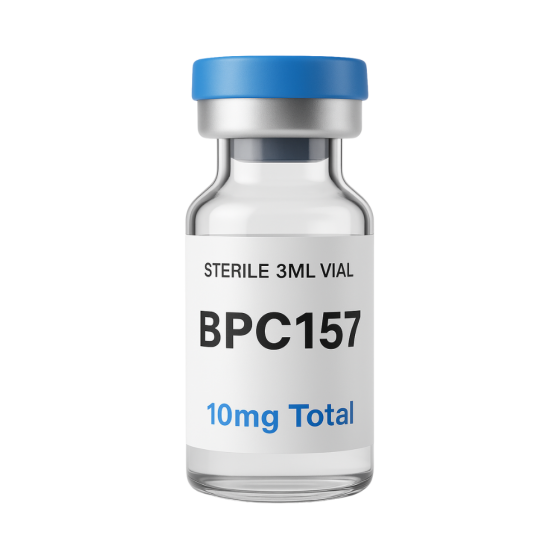Authorized Reseller
BPC-157 (Body Protective Compound-157) is a synthetic peptide derived from a protein found in the stomach. Known for its regenerative and anti-inflammatory properties, BPC-157 is commonly used to support healing of muscles, tendons, ligaments, and the digestive tract. It may also aid in recovery from injuries and reduce pain and inflammation.
BPC-157 (Body Protective Compound-157) is a synthetic peptide consisting of 15 amino acids, originally derived from a protein found in the human gastric juice. It is widely recognized in regenerative medicine and performance wellness for its powerful healing and anti-inflammatory properties. BPC-157 has been shown in animal studies to significantly accelerate the healing of muscles, tendons, ligaments, nerves, and even bone. It promotes angiogenesis (the formation of new blood vessels), which supports improved blood flow to damaged tissues—enhancing nutrient delivery and cellular repair. This makes it a popular option among athletes, biohackers, and individuals recovering from orthopedic injuries or surgery. In addition to musculoskeletal repair, BPC-157 demonstrates protective effects on the gastrointestinal tract. It may help heal ulcers, reduce intestinal inflammation (such as in IBS or Crohn’s), and protect against damage caused by NSAIDs and other irritants. Some potential benefits of BPC-157 include: Accelerated wound and injury healing Reduced inflammation and pain Improved gut health and digestive function Neuroprotective effects and support for nerve regeneration Potential mood and cognitive benefits via modulation of the gut-brain axis BPC-157 is typically administered via subcutaneous injection near the site of injury or orally for gut-related concerns. While human studies are still limited, anecdotal and preclinical evidence has driven its growing popularity in integrative and functional
| Benefits | 1. Accelerated Healing Speeds up the recovery of muscles, tendons, ligaments, and joints Promotes faster wound healing and tissue regeneration May support post-surgical recovery and reduce scar tissue formation |
|---|---|
| FAQs | 1. What is BPC-157? 2. What are the main benefits of BPC-157? 3. Is BPC-157 safe? 4. How is BPC-157 administered? 5. How long does it take to see results? 6. Can I use BPC-157 for chronic issues? 7. Is BPC-157 legal? 8. Are there any side effects? 9. Can BPC-157 be used with other treatments? 10. Who should not use BPC-157? |
| Brand | Alpha Biomed |
1. Musculoskeletal Injuries Strains, sprains, and tears in muscles, tendons, or ligaments Rotator cuff injuries, ACL/MCL recovery, tennis/golfer’s elbow Overuse injuries or repetitive stress damage
2. Post-Surgical Healing Speeds up tissue repair and reduces scar formation Helps restore function and mobility after orthopedic or soft tissue surgery
3. Joint Pain and Inflammation May reduce symptoms associated with arthritis, bursitis, or tendinitis Can be used alongside physical therapy for joint recovery
4. Gastrointestinal Issues Leaky gut syndrome Inflammatory Bowel Disease (IBD) – including Crohn’s and ulcerative colitis Gastric ulcers and acid-related damage IBS and general intestinal inflammation
5. Nerve and Brain Support Nerve injuries (including peripheral neuropathy) Potential use in traumatic brain injury (TBI) recovery protocols May help with conditions affecting nerve regeneration
6. Athletic Performance and Recovery Speeds up recovery from training-related microtears or fatigue Helps athletes return to activity faster with less downtime
7. Chronic Pain or Inflammation For individuals dealing with long-term inflammatory or autoimmune conditions May help reduce dependence on NSAIDs or corticosteroids
8. Skin and Wound Healing May promote regeneration in skin injuries, surgical incisions, and burns Can be beneficial for pressure ulcers or diabetic wound care (under medical supervision)






